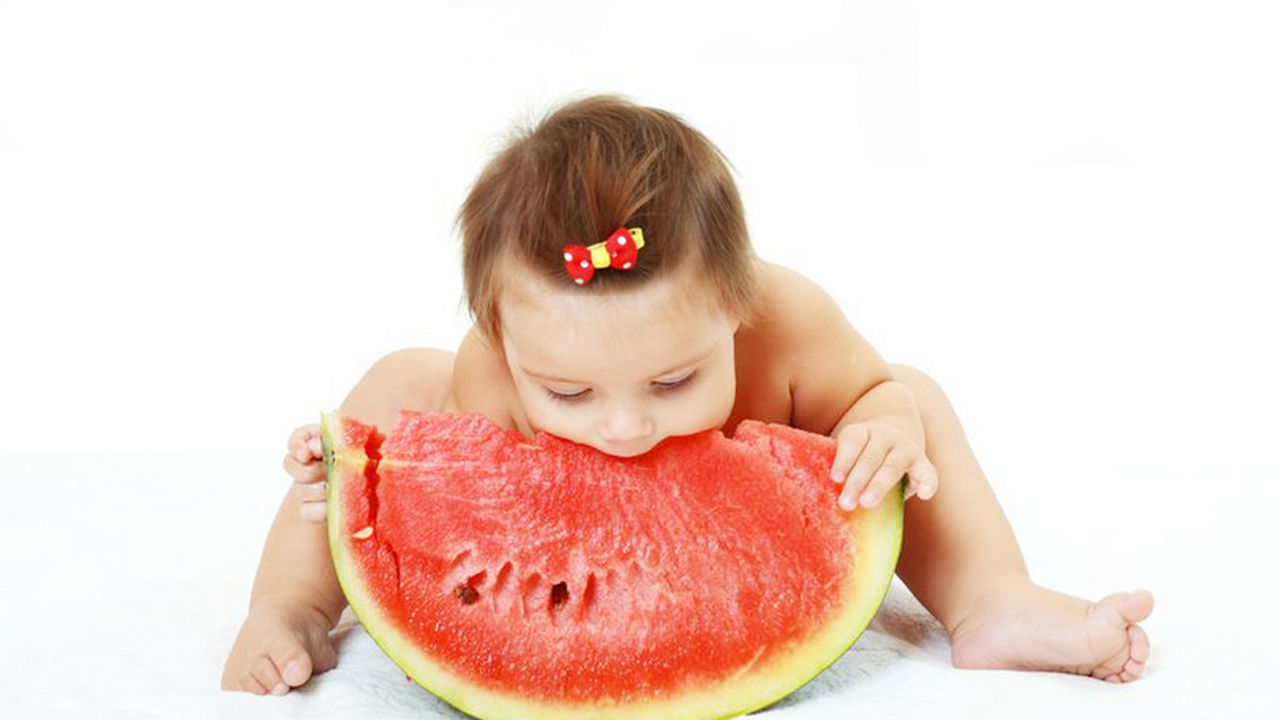Breastmilk is the best for babies. The World Health Organisation recommends exclusive breastfeeding for the first six months of life. Unnecessary introduction of bottle feeding or other food and drinks will have a negative impact on breastfeeding. After six months of age, infants should receive age-appropriate foods while breastfeeding continues for up to two years of age or beyond. Consult your doctor before deciding to use infant formula or if you have difficulty breastfeeding.
Babies need a diet that meets its current energy and nutrient requirements. So you can create a food plan that your child does well and tastes.
Healthy varieties on the child’s plate
Every child needs a diet that can meet its current energy and nutrient requirement. You can create a food plan that your child likes to eat
Baby food will see its end when your child reaches the 10th month of age with 3 main meals and 2 small snacks for your child daily. This enlarged food selection often raises questions from parents on what food they should eat with their child. Will it be enough? Does it get the nutrients it needs for an ideal development? But if you eat a varied and healthy family meal daily, you can set a good example and encourage your child to try the new dishes.
The below shows the recommended intake of the children by their age group
| Recommended number of servings^ per day | |||||
|---|---|---|---|---|---|
| 6 months (181 days) - 12 months | 1-2 years | 3-6 years | 7-12 years | 13-18 years | |
| Brown Rice and Wholemeal Bread | 1-2 | 2-3 | 3-4 | 5-6 | 6-7 |
| Fruit | ½ | ½ - 1 | 1 | 2 | 2 |
| Vegetables | ½ | ½ | 1 | 2 | 2 |
| Meat and Others Of which are diary foods or calcium containing foods | 2 11/2 | 2 11/2 | 2 1 | 3 1 | 3 1 |
^For Babies aged 6 months – 12 months, their diary foods or calcium-rich foods servings should be provided in the form of 750ml milk
Examples of a serving
| Food Group | Number of Serving /Day | Emample of 1 Serving |
|---|---|---|
| Brown Rice and Wholemeal Bread | 5-7 |
|
| Fruit | 2 |
|
| Vegetables | 2 |
|
| Meet and Others | 2-3 |
|
Beverages
If it was based on body weight, children need more water when compared with adults.
6 glasses of 100 millilitres of water should be distributed across the day for child consumption on a daily basis
Suitable forms of liquid: water, unsweetened herbal and fruit teas
Fruits and vegetables
Fruits and vegetables provide important sources of vitamins, minerals and phytochemicals.
Use varieties of it. E.g. In salads, sandwiches or just as a snack
You can include peas, legumes and beans into your child’s diet every once a week (pureed as porridge or soup)
Whole wheat bread
Grain products should be made with at least half from whole grains. Caution: do not feed whole grains by itself
What toddlers should consume in moderation:
Milk and dairy products
300-330 millilitres of milk or milk products that are distributed into 3 servings daily
The high calcium content from the milk helps to contribute to a better bone health in your child. Some children’s milk will contain both vitamin D and calcium for normal growth and development of bones together with iodine, which is important for the thyroid function.
Fish and eggs
These are the important suppliers for vitamins and minerals, iodine and omega-3 fatty acid
It is best to include 1-2 servings of it on the menu throughout the week
Meat
Contain iron, zinc and B vitamins.
Choose meat alternatives that are from the low fat varieties
Fatty food
Fat provides twice as much energy as carbohydrates and protein
Vegetable fats and oils contain vitamins and essential unsaturated fatty acids
You could use olive oil, soybean oil, sunflower oil or rapeseed oil for child consumption when preparing food
Sugar-rich foods
Delivers a lot of energy but little nutrients
Food that should be avoided completely
Strongly flatulent foods (e.g. Legumes) unless your child is able to tolerate it well
Fatty meat
Small and hard food (E.g. nuts or raisins) which may increase the risk of suffocation
Heavily salted or spicy dishes
That’s a lot of information to absorb at once. But do not worry, change the habits slowly. You do not even have to change your shopping and eating habits overnight. Give yourself and your family time for every child eats differently. Be proud that you can contribute with your knowledge on healthy nutrition for your family and for the future health of your child.
Join our AptaAdvantage Club today to enjoy:
- Educational content to support you on your motherhood journey
- Various complimentary classes and exclusive discounts with our key enrichment partners
Kickstart your AptaAdvantage experience by signing up HERE.
Related articles

Connect with our team of experts
We provide advice and support for you on your parenthood journey




